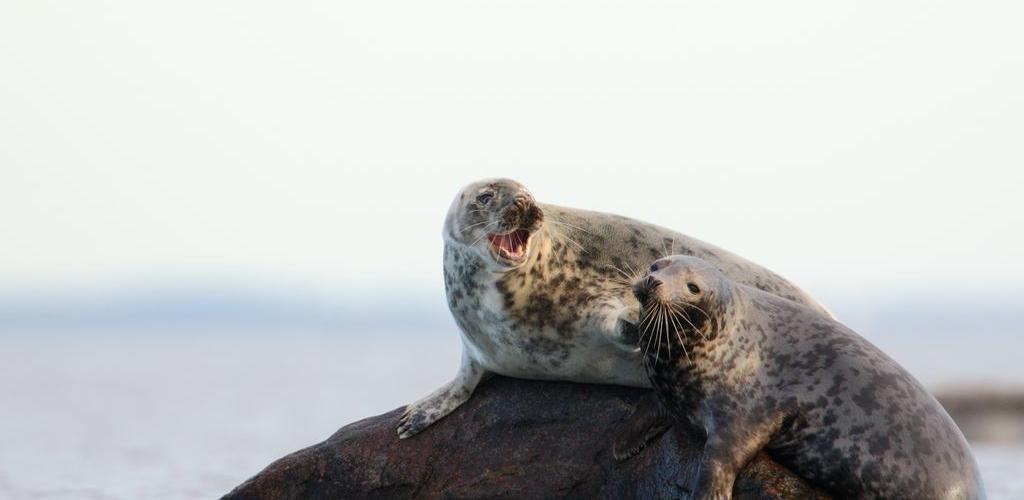While the grey seal population has decreased in the past centuries, Estonian sea today makes a home to about 4000 animals. Grey seal is the largest marine mammal in the Baltic Sea weighing up to 300 kilograms.
The main seal species you may encounter in Estonia are the grey seal and ringed seal. The ringed seal tends to be very sensitive to pollution and thereby hides far from human habitats in the Finnish Gulf nearby Russia.
Seals are a curious bunch. Many previous travellers have witnessed grey seals' love of music. If you have a musical instrument handy, it might be an idea to bring it along with you. In general, grey seals tend to chill on the rocks and swim around the boat going human watching from the water.
Unwritten rules of seal watching
Nature is a major part of Estonian way of living and the country takes much pride in its furry residents. It's important to remember that the water is the one and only home to these adorable creatures and to respect their environment and privacy.
- While you might be tempted to feed the seals, there's no real need to do so. Seals are some of the craftiest fishermen in the world, and it would be in the best interest of the ecosystem that they sustain a healthy diet.
- You are welcome to admire from afar but do avoid getting too close to the seals so not to disturb and disrupt their daily life. It is not recommended to visit the seals during calving or nursing periods and most seal watching tours will be on a break during that period.
- Bring your binoculars! Besides seals there are thousands of birds to watch. After all, Estonia is considered one of the best birdwatching destinations in Europe.
- The weather tends to get rather nippy out on the sea, even during the summer, so a warm coat is a must. If you tend to get seasick, a ginger tablet might help relieve the symptoms.
- Last but not least - avoid bringing cosmetics with micro plastics and single-use plastics to the sea and assort your trash to avoid polluting the sea.


















